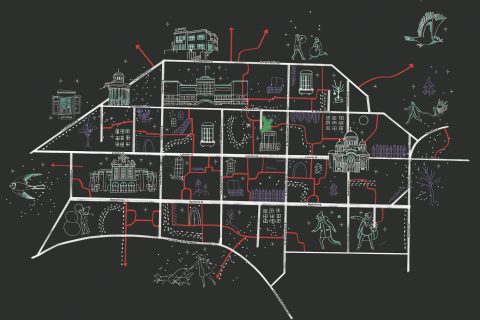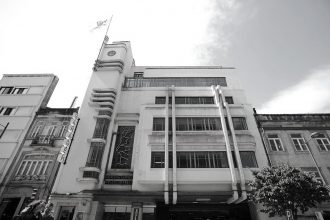When viewing photos from previous trips or watching other people find ways to leave, fly, or entertain themselves, it is easy to feel imprisoned between the four walls in the midst of the second quarantine. Currently, even that normally invisible border between the city and the district is now more real than the Schengen border. All the streets and parks have been “strolled out” and none of us dare to look at screens anymore. How to change your point of view?
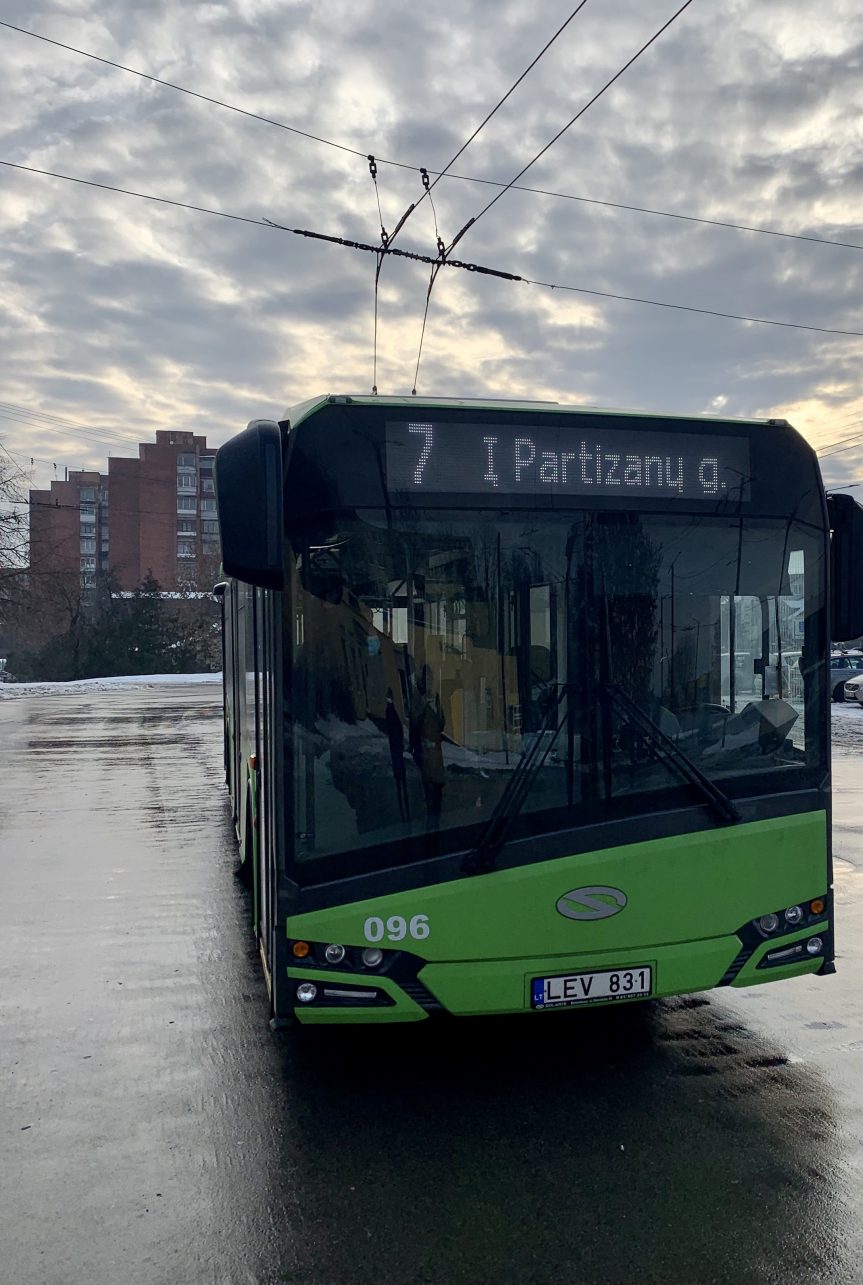
Literally. By sitting in a trolleybus – preferably in the back seat – you can see the city from above. The phone is hidden in your pocket, the names of the stops change slower and your neck stretches to the left and then back to the right. On Friday, January 22, our goal is the trolleybus route no. 7. From Kaniūkai to Partizanų St. and back. Two hours of crawling with the help of two wires. And if you choose to get off sometimes, it will take you longer but that might help you fulfil the recommended daily norm of ten thousand steps. Of course, you can choose any other route or even play a šleika roulette (šleika is a slang term for a trolleybus, and it means “suspender”; also, the word might only be used in Kaunas, right Vilnius residents?) and change up their numbers. However, seven is a lucky number.
Our tour started in the center of Kaunas at 9:50am already after a possible morning rush hour. There were never more than 5 passengers on the trolleybus, and none of their noses ever stuck out of the mask, so the atmosphere was safe. There were no tourists like us either, all the other eyes were focused on screens. The big screen announcing the stops kept reminding us which groups of blood were in short supply that day. It also revealed that the new National Kaunas Drama Theatre bus stop on Kęstučio Street – the name was gifted to the theatre in December, on the occasion of its centenary – for now, exists only on the internet. Physically it is still called S. Daukanto.
When slowly moving through the New Town and the Old Town – differently than if you were taking a walk or driving a car – the previously unnoticed details or even perspectives of modernist and older buildings open up to you. The house in the middle of the city center, which used to belong to Elchananas Elkesas, a Jewish doctor, who died in the ghetto, looks like its counting its last days. Although the temperatures are above zero already, the windows are engraved with ice flowers, and the plaster is cracking. It’s disappointing, especially when the houses across the street are glowing. And after the facade of Maironis Gymnasium was restored, an old inscription in Cyrillic was revealed. The church towers appear and then disappear behind the residential houses and when the trolleybus turns to Vilijampolė, Kaunas Castle is gracefully revealed.
The intensity of the images changes after crossing the Neris. Vilijampolė has many historical layers, several of which often fit in one house, or more precisely, a cabin. We send greetings to Inga Navickaitė-Drąsutė, who captured the uniqueness of the district in her project Half-Houses. The residential, personal being surrounded by fences and window shades is intertwined with the strict industrial face of Vilijampolė, which dates back more than a hundred years. Once people brewed beer here and now, they make clothes, processed food, and cast railings. Boats are cosily hibernating along the Nemunas; buses are resting. It may sound brazen, but Raudondvaris Road is most interesting in this kind of weather when verdant nature is not distracting you or limiting your field of vision. When you slowly dive into the bleak greyness, it blossoms in your eyes and turns into a mosaic. We even manage to notice the extremely secret entrance to the world-famous museum Atomic Bunker and look closer at the relief decorating the facade of Kauno energija.
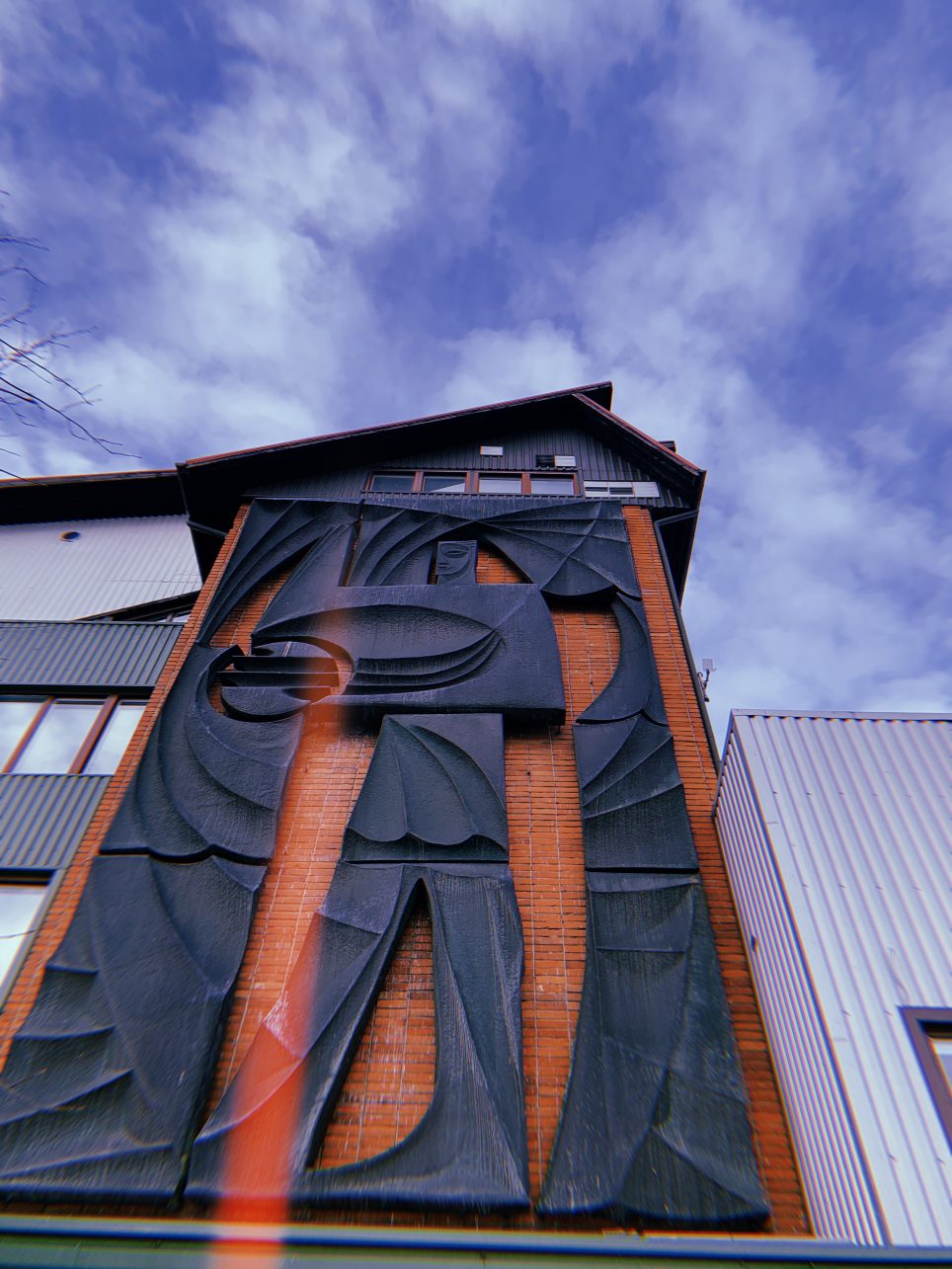
In Kaniūkai, the driver asks us to get off the trolleybus. “How long will you be resting here?” we ask. “For an hour,” he says. And… apparently lies! Fifteen minutes later, we were already turning back. By the way, it is interesting that at the last stop you can find a hair salon and… a store of horse grooming supplies. The driver could manage to have a haircut in fifteen minutes, but would it be enough time to choose a saddle?
The trolleybus route no. 7, especially its central part, could certainly become a tourist favorite. You would not be able to count all the pearls of the interwar period, you would pass through the inaccessible Mačiūnas Square, discuss the tendencies in street art, and – when there is no quarantine – choose a stop for lunch or dinner. We vote for the cafe with the most unexpected name – Kavinė-Rabas – located next to Kaunas State Philharmonic and the always open Courtyard Gallery.
At the 6th Fort of Kaunas Fortress, we had to remember our phones and show our tickets via Žiogas app to the controllers. Yes, in today’s public transport you are either a zuikis (literally, a hare; figuratively, a fare dodger) or a žiogas (literally, a grasshopper and in this instance a name of the public transport app). By the way, our tour took us four tickets each, so 2.8 euros each. If the museums and other institutions were open, we would have spent more. Now, we looked at several objects of the Vytautas the Great War Museum exhibited at the entrances of the fort only from a distance, with the sun shining brightly on a white background like in an art gallery. We also found traces of other hikers. They left the imprints of their bodies on the snow covering the slopes of the fort. Our regards!
We reached the next exciting section of the route on foot. Remember the attempts to spread street food culture in Steigiamojo Seimo Square or Nemunas Island? Ultimately, this atmosphere is being created in the Girstučio neighborhood – where the aromas and flavors are spreading from different little shops cramped around one section of Chemijos Avenue – without loud advertising campaigns. It is likely that even more flavors will appear because the construction of Kaunas Ice Palace has recently been completed. While exploring a building that had sprouted on the formerly empty field (which doesn’t ruin the general mood with its aesthetic) we met its neighbor, who complained that the surrounding houses shook considerably during the construction. Let’s hope that the hockey fans will be calmer than the heavy equipment.
We are accompanied to the last stop of the trolleybus by the so-called Bermuda Triangle, one of the most brutal residential quarters, with many stories hiding in the concrete. Then, we are embraced by the stylish work of Algimantas Kančas – Kaunas Church of the Good Shepherd – and the slightly more exotic New Apostles Church. We find ourselves surrounded by various car service businesses, but we don’t stay there too long and turn around once again. Gandhi, who unexpectedly emerges from the trees, becomes the last stop of the trip. Mohandas Karamchand Gandhi was a lawyer, head of the Indian National Congress, and India’s national and spiritual leader. What is he doing in Kaunas?
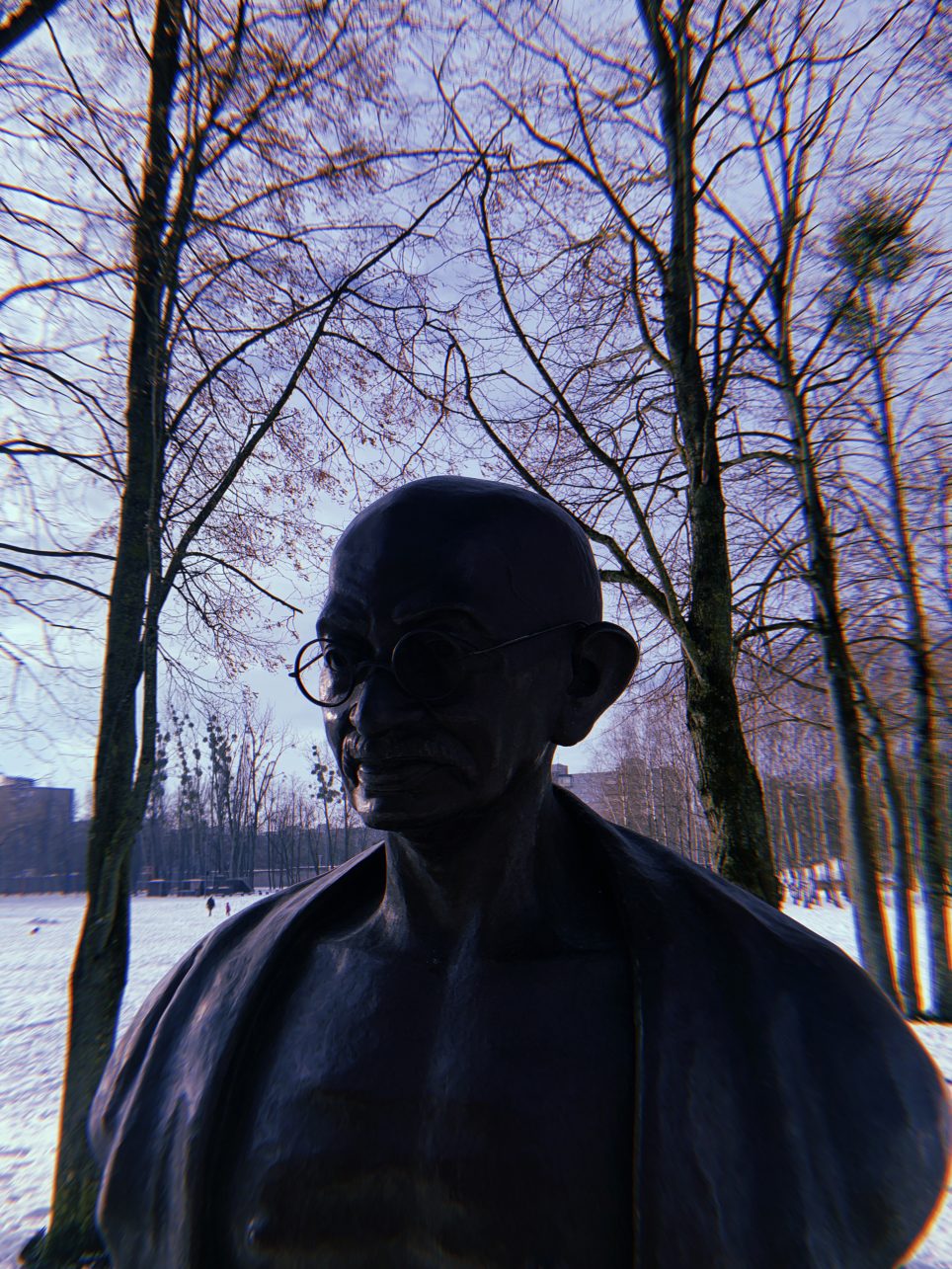
It is worth starting from the fact that this is the second Gandhi in Lithuania. Five years ago, a sculpture of him and his friend architect Hermanas Kalenbachas (born in Rusnė) was opened in Rusnė Island. Men met in South Africa. It was a popular destination for Litvak emigrants. Gandhi himself never visited Lithuania. And yet in the very end of 2020 his bust was erected in Draugystės Park in Kaunas. It is a gift from the Indian Consulate and it’s not as random as we might think. Indian Vice President Venkaiah Naidu, who visited Kaunas a couple of years ago, noticed the approaching 30th anniversary of the Baltic Way, and it is no secret that Gandhi’s personality embodies the idea of nonviolent, peaceful civil resistance. There are talks that other highlights symbolizing Kaunas’ international relations could appear in Draugystės Park.
You can make use of trolleybus route no. 7 in a variety of ways. You can get stuck to the window and count roundabouts (total Olympics!), parks, library branches, pizzerias, murals, evaluate sign design, facade solutions and dog breeds. You can also visit the cemetery that no longer exists. You can also lazily listen to an audiobook and never get off unless the driver asks. You can explore the writings left with markers on the seats in the back. For some reason, passengers write down their Snapchat names there. Or you can complete the whole route on foot, of course, the point of view will be different.

